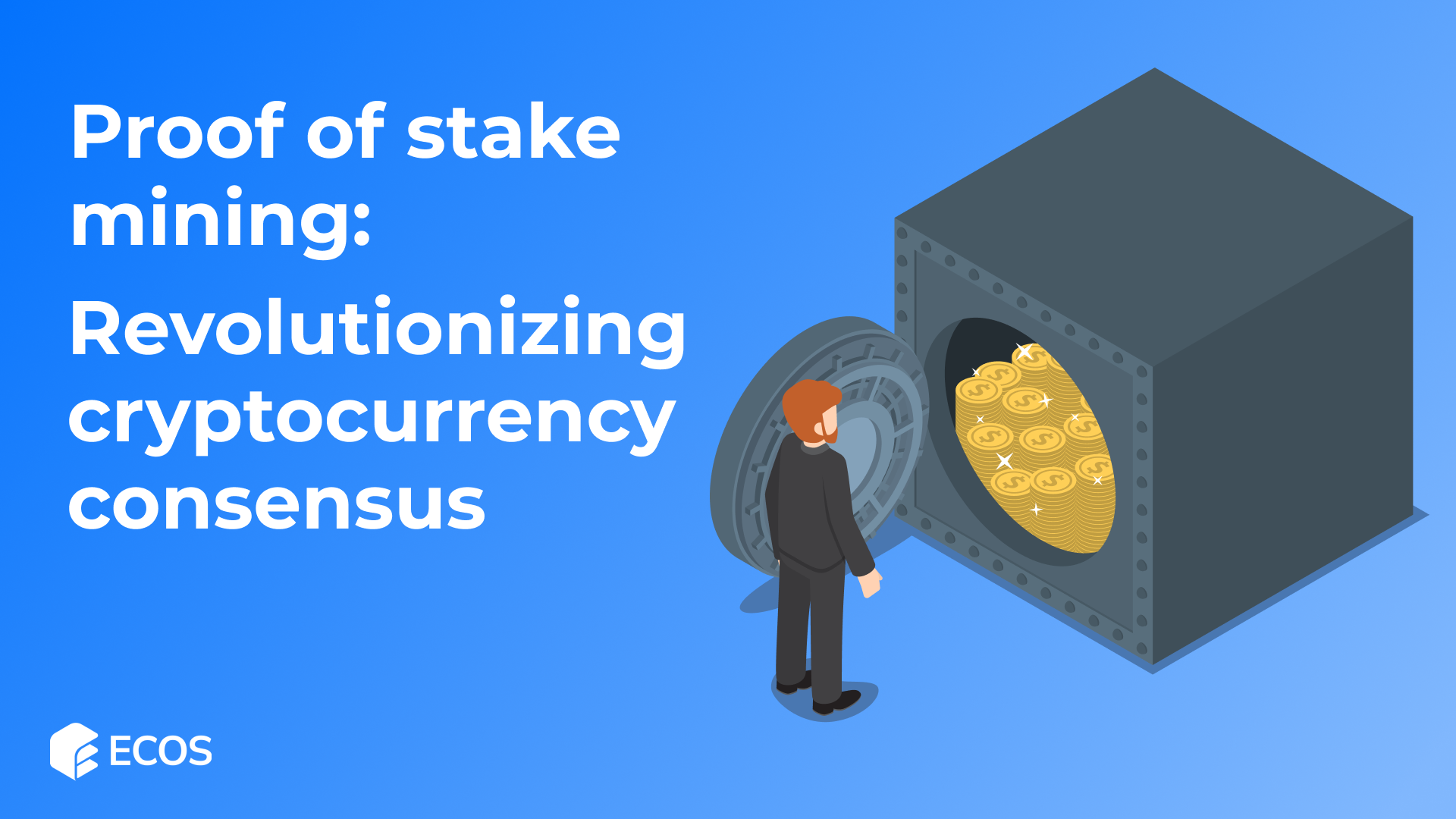Proof of Stake Mining: Revolutionizing Cryptocurrency Consensus

In the fast-evolving landscape of cryptocurrencies, where traditional proof of work (PoW) mining has long been the dominant method for confirming transactions and adding new blocks to the blockchain, a new contender has emerged – Proof of Stake (PoS) mining. This innovative approach to securing and validating blockchain networks presents a more energy-efficient and scalable alternative. In this article, we delve into the world of PoS mining, exploring its mechanics, benefits, and potential impact on the cryptocurrency ecosystem.
Introduction
Cryptocurrencies have revolutionized the financial landscape, offering decentralized and secure alternatives to traditional currencies. However, the energy-intensive nature of traditional PoW mining has raised concerns about its long-term sustainability and environmental impact. Enter Proof of Stake mining, a novel consensus mechanism designed to address these challenges while enhancing scalability and security.
Understanding Traditional Mining (PoW)
Traditional PoW mining, the foundation of networks like Bitcoin, involves miners solving complex mathematical puzzles to validate transactions and secure the blockchain. This process demands immense computational power and energy consumption, making it both resource-intensive and environmentally contentious.
The Emergence of Proof of Stake (PoS)
PoS mining operates on a different principle, focusing on the ownership of cryptocurrency rather than computational work. In a PoS system, validators – often referred to as “forgers” or “stakers” – create new blocks and validate transactions based on the number of coins they hold and are willing to “stake” as collateral.
How Proof of Stake Works
Unlike PoW, where miners compete to solve puzzles, PoS miners are chosen to create new blocks and validate transactions based on their stake. The higher the stake, the greater the chance of being chosen. This eliminates the need for energy-intensive computations and reduces the risk of centralization.
Advantages of Proof of Stake Mining
- Energy Efficiency: PoS mining consumes significantly less energy compared to PoW, making it more environmentally friendly.
- Scalability: PoS networks can process more transactions in less time, addressing a major limitation of PoW systems.
- Security: The inherent economic risk of staking discourages malicious behavior, enhancing network security.
- Accessibility: PoS requires less specialized hardware, democratizing participation in mining and securing the network.
Challenges and Criticisms
While PoS offers numerous benefits, it’s not without its challenges. Critics argue that the rich-get-richer dynamics could lead to centralization, and potential attacks on the network’s integrity still pose concerns.
Comparing PoW and PoS: Which is Better?
Both PoW and PoS have their merits. PoW is battle-tested and secure, but energy-intensive. PoS is energy-efficient but requires careful incentive design to prevent centralization. The choice depends on the project’s goals and values.
Prominent PoS Cryptocurrencies
Several cryptocurrencies, like Ethereum (transitioning to Ethereum 2.0), Cardano, and Solana, have adopted or plan to adopt PoS mechanisms, showcasing its growing prominence.
Staking: A Deeper Dive
Staking involves participants “locking up” a certain amount of cryptocurrency to support network operations. In return, they receive staking rewards, creating an additional stream of income.
Economic Implications of PoS Mining
PoS introduces a new economic model where holding and staking tokens can generate income, potentially reshaping investment strategies and portfolio management.
Environmental Considerations
The shift to PoS can significantly reduce the carbon footprint of cryptocurrency networks, aligning the industry with broader sustainability goals.
Security in PoS Networks
PoS networks rely on participants’ vested interest in the network’s stability. The financial risks involved act as a strong deterrent against malicious activity.
The Road Ahead for PoS Mining
As blockchain technology continues to evolve, PoS is likely to play an increasingly central role. Its efficiency, security, and scalability make it an attractive option for new and existing projects.
Regulatory Outlook for PoS
Regulators are keeping a close eye on PoS networks. The potential for decentralized control and reduced energy consumption aligns with certain regulatory objectives.
Conclusion
Proof of Stake mining represents a paradigm shift in the world of cryptocurrency. Its energy-efficient, scalable, and secure nature makes it a compelling alternative to traditional PoW systems. As the blockchain industry matures, PoS is poised to shape the future of mining and the broader cryptocurrency landscape.
FAQs
- Is PoS mining more secure than PoW?
Yes, PoS mining offers enhanced security by linking mining power to a participant’s financial stake in the network.
- Can anyone participate in PoS mining?
Yes, PoS mining is more accessible as it doesn’t require specialized hardware, allowing a broader range of participants to get involved.
- What are the environmental benefits of PoS?
PoS mining consumes significantly less energy compared to PoW, reducing the carbon footprint of cryptocurrency networks.
- How are staking rewards determined?
Staking rewards are typically determined by factors like the amount of cryptocurrency staked and the network’s overall health.
- Will PoS replace PoW entirely?
While PoS presents a strong alternative, PoW’s security track record means both mechanisms are likely to coexist for the foreseeable future.









